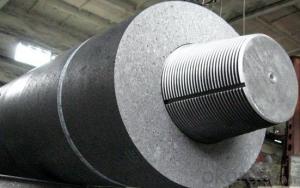When we talk about the backbone of the steel industry, graphite electrodes come to mind. These cylindrical and highly conductive materials are the unsung heroes in the world of metallurgy. They play a crucial role in electric arc furnaces, helping to heat up and melt the raw materials to create steel. But what makes a graphite electrode stand out from the rest? It’s all about quality assurance and the standards that govern their production and performance.
Let’s dive into the fascinating world of graphite electrode standards and how they ensure the quality of these essential components in the steel industry.
First things first, what exactly are graphite electrodes? They are made from high-quality graphite, which is known for its excellent electrical conductivity and thermal properties. The production process involves mixing the graphite with binders and then molding and baking it at high temperatures. The result is a strong, durable, and reliable electrode that can withstand the harsh conditions of the steel manufacturing process.
Now, let’s talk about the importance of quality assurance. Quality assurance is like the guardian of the industry, ensuring that every graphite electrode meets the required standards of performance, safety, and reliability. It’s not just about following a set of rules; it’s about maintaining a culture of excellence and continuous improvement.
One of the key aspects of quality assurance is the adherence to international standards. These standards, set by organizations like the International Organization for Standardization (ISO), provide a framework for the production and testing of graphite electrodes. They cover everything from the raw materials used to the final product’s dimensions and performance characteristics.
But why are these standards so important? Well, for starters, they ensure that the graphite electrodes are safe to use. No one wants a faulty electrode causing accidents or disruptions in the steel production process. Moreover, they help maintain a consistent quality across the industry, which is essential for the smooth operation of steel plants worldwide.
Another critical aspect of quality assurance is the testing and inspection of graphite electrodes. This involves a series of rigorous tests to evaluate the electrode’s mechanical strength, electrical conductivity, and resistance to wear and tear. By subjecting the electrodes to these tests, manufacturers can identify any potential issues and make the necessary improvements before the product reaches the market.
Let’s not forget the role of certifications in quality assurance. Certifications, such as ISO 9001, are proof that a company is committed to maintaining high-quality standards in its production processes. They also provide assurance to customers that the products they purchase meet the required quality benchmarks.
Now, let’s discuss the different types of graphite electrodes and their specific standards. There are three main types of graphite electrodes: standard, high-power, and ultra-high-power. Each type has its own set of standards, tailored to its unique properties and applications.
Standard graphite electrodes are the most common and are used in various applications, including steel production, foundries, and non-ferrous metal melting. They have a moderate level of electrical conductivity and mechanical strength, making them suitable for a wide range of uses.
High-power graphite electrodes, on the other hand, are designed for more demanding applications. They offer higher electrical conductivity and mechanical strength, allowing them to operate at higher temperatures and with greater efficiency. These electrodes are ideal for large-scale steel production and other heavy-duty applications.
Ultra-high-power graphite electrodes represent the pinnacle of graphite electrode technology. They are made from the purest graphite and have exceptional electrical conductivity and mechanical strength. These electrodes are used in the most advanced steel production processes, where the highest levels of performance and reliability are required.
In conclusion, graphite electrode standards play a vital role in ensuring the quality and performance of these essential components in the steel industry. By adhering to international standards, undergoing rigorous testing and inspection, and obtaining the necessary certifications, manufacturers can produce graphite electrodes that meet the highest levels of quality and safety. This not only benefits the steel industry but also contributes to the overall advancement of metallurgical processes and technologies.

